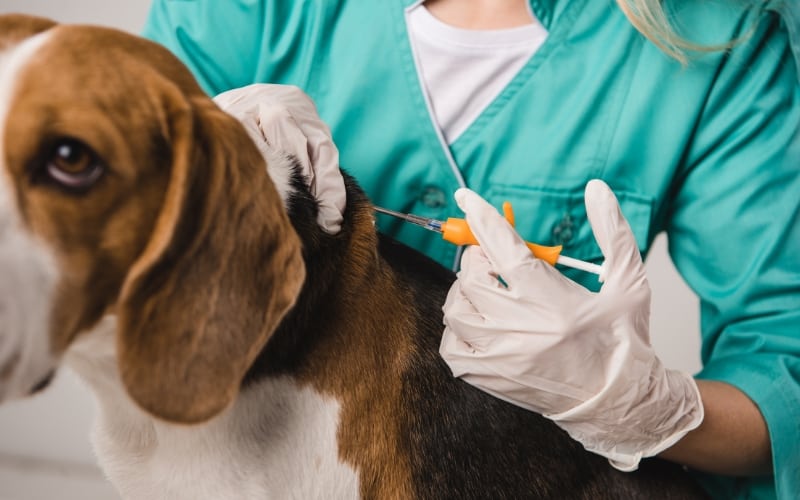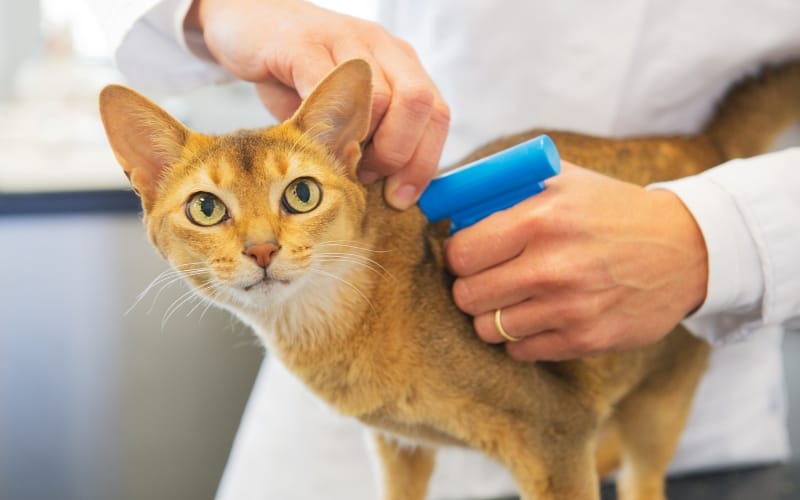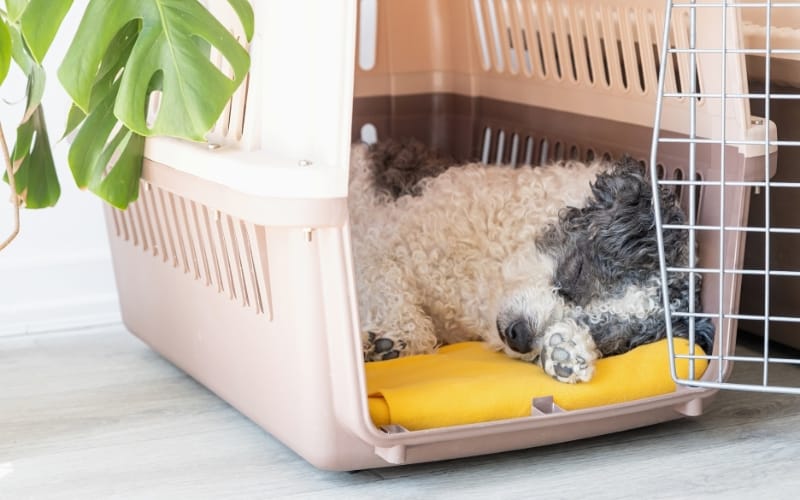There is no denying the excitement that comes with moving overseas, especially if you are finally moving to somewhere that you have always dreamed of living. Whether you are heading to Australia or New Zealand in search of open space and sunshine, or you are moving somewhere in Europe to reunite with family, a big move overseas can be life changing.
Of course, you’re going to want to take your pet cat or dog with you, as leaving a beloved member of the family behind just isn’t an option. Luckily, this is entirely possible. Regardless of where you are moving to, with a little bit of preparation and the right information, you can ensure a smooth and stress free journey for your furry friend.
Key Takeaways
- There is much to think about when moving with your pets abroad so plan well in advance.
- A good pet relocation company is a good investment and will take care of all the legal requirements and paperwork for you.
- In addition, to organising your pet’s relocation, you need to consider what needs taking care of when you arrive in your new country.
Our Top Tips for Relocating Abroad With Your Cat or Dog
1) Enlist a Specialist Pet Relocation Company

When you are moving overseas and you want to take your cat or dog with you, you should always start by finding a specialist pet relocation company. At United International Removals, we work with TransFur and we aren’t shy about recommending them to our customers. The job of a pet relocation company is to help you through the process of moving abroad with a beloved pet, which can be complex, depending on where you are moving to.
It’s not simply a case of booking your cat a plane ticket, or heading onto a ferry with your dog. Countries have a variety of rules and regulations about moving with a pet, and these need to be adhered to. Though moving abroad with a cat or dog is unlikely to be a problem, there are hoops to jump through and set processes to follow. With a pet relocation company helping you out, you can relax knowing that the experts are handling everything.
So this has to be our number one tip as they will take care of the below for you!
2) The Earlier You Plan Your Pet’s Move, The Better
Planning ahead when moving abroad with a pet cat or dog is crucial for several reasons. Firstly, it allows you to ensure the well-being and safety of your companion throughout the entire relocation process. By researching and understanding the destination country’s specific requirements and regulations regarding pet importation, you can obtain the necessary documentation – such as vaccinations, health certificates and microchipping – well in advance.
Additionally, advance planning enables you to make informed decisions about transportation methods, such as arranging for pet-friendly flights or booking quarantine facilities if required. Plus, planning ahead gives you ample time to prepare your pet for the journey, gradually acclimating them to travel carriers and reducing potential stress. Ultimately, proper planning minimises the chance of a last minute complication occurring, reduces the risk of delays or denied entry for your pet, and ensures a smoother transition to their new environment. Not only does this reduce their stress and your stress, it provides them with the best possible start in their new home.
3) Do Your Research, Plan Ahead and Understand Import Requirements
Before making any arrangements, thoroughly research the import requirements of your destination country. Each country has specific regulations regarding pet importation, and you can’t simply move with your cat or dog without taking these into account. Vaccinations, health certificates and quarantine periods all need to be considered. Plan well in advance, as some procedures may take several months to complete.
4) Find a Pet-Friendly Airline and Flight

Choose an airline that is known for its pet-friendly policies and facilities. After all, you want your four legged friend to be comfortable and well looked after during their journey. Check if they allow pets in the cabin or if they require them to travel in the hold. Book your flights early to secure a spot for your pet and inform the airline about your pet’s travel plans.
5) Prepare Your Pet for Travel by Organising Health Checks and Vaccinations

Visit your vet to ensure that your pet is healthy and up to date on their vaccinations. Some countries have specific requirements for vaccinations, such as rabies shots, and it’s important to comply with them. Obtain a health certificate from your vet, which is usually required for international travel.
6) Keeping Calm, Positive Energy and Reassurance is Key
Pets can pick up on your emotions, so it’s important to maintain a calm and positive demeanour throughout the moving process. Offer plenty of reassurance, affection and attention to alleviate any anxiety or stress your pet may be experiencing. Your calm presence will help them feel more secure during this big transition.
7) Keep Them Safe with Microchipping and Identification

Many countries mandate microchipping for pets entering their borders, and it’s a key way of keeping them safe. Ensure your pet is microchipped with a compatible international standard, and register the chip with your current contact information. Additionally, attach a collar or harness with identification tags that include your name, phone number and address. If your pet were to go missing, this makes it a lot easier to track them down.
8) Make Their Travel Crate Comfortable and Secure

Invest in a sturdy and airline approved travel crate that allows your pet to stand, turn around, and lie down comfortably. Get your pet accustomed to the crate gradually by introducing positive associations and using it for short periods at home. Add familiar bedding and toys to provide a sense of security during the journey.
9) Understand the Quarantine Process
Some countries, such as Australia, require a quarantine period for pets upon arrival. Familiarise yourself with the quarantine regulations and prepare your pet accordingly. Pack essential items – such as food, toys, and a blanket with familiar scents – to help your pet feel more at ease during this temporary separation.
10) Pack Your Pet’s Essentials
Moving abroad with a cat or dog is a lot easier when they are relaxed and have everything they could possibly need. Pack a travel bag for your pet with their essential items, including their regular food, treats, medications, grooming supplies, and a familiar blanket or bedding. Having familiar scents and items from home will provide comfort and reassurance during the journey and while settling into your new home.
11) Make Sure Your New Home is Pet-Friendly

When choosing your new home in your new country of residence, consider the needs of your pet. Research pet-friendly apartments or houses to ensure a smooth transition. If you are going to be temporarily staying in a hotel until you find a home, make sure it’s also pet-friendly. Having a safe and welcoming environment will help your pet adjust to their new surroundings more easily.
12) Research Pet-Friendly Facilities, Such as Vets and Parks

Before your move, research pet-friendly facilities in your new location. Find a trusted vet who can provide necessary healthcare services and vaccinations once you arrive. Additionally, locate nearby parks or dog-friendly areas where your pet can exercise, socialise, and adapt to their new environment.
13) Update Your Contact Information on Their Microchip and Tags
Ensure that your contact information is up to date on your pet’s microchip registration and identification tags. If possible, provide a temporary contact number or address for the initial period after your move, until you establish a permanent residence. This will help ensure your pet can be easily reunited with you if they happen to get lost.
14) Understand Pet Insurance and Coverage Abroad
Review your pet insurance policy and determine if it covers veterinary care in your new country. If not, consider purchasing an international pet insurance plan to provide coverage for any unexpected health issues or emergencies. More often than not, you will need to take out a new plan in your new country.
15) Research Relevant Pet Laws and Regulations
When it comes to laws and regulations about pets, every country is different. It’s a good idea to familiarise yourself with local pet laws and regulations in your new home. Some places may have specific lead laws or restrictions on certain dog breeds, others might have regulations about breeding. Understanding and adhering to these laws will help you and your pet avoid any unnecessary legal issues.
Moving overseas with your house and pets

Moving abroad with pets has become a common practice for a lot of people, making it a feasible option if you are considering doing the same. Countless people have successfully relocated with their beloved pets, overcoming challenges and navigating the necessary steps involved in the process.
With the abundance of resources available today, including online communities and professional services dedicated to assisting pet owners in international moves, there is a wealth of support and information at your disposal. This is where we come in.
At United International Removals, we provide a wide range of removal services to those who are relocating abroad. Regardless of where you are going, our experts are always on hand to guide you through the removal process. Though we don’t provide pet relocation services ourselves, we work closely with the professionals that do. Get in touch to find out more.
